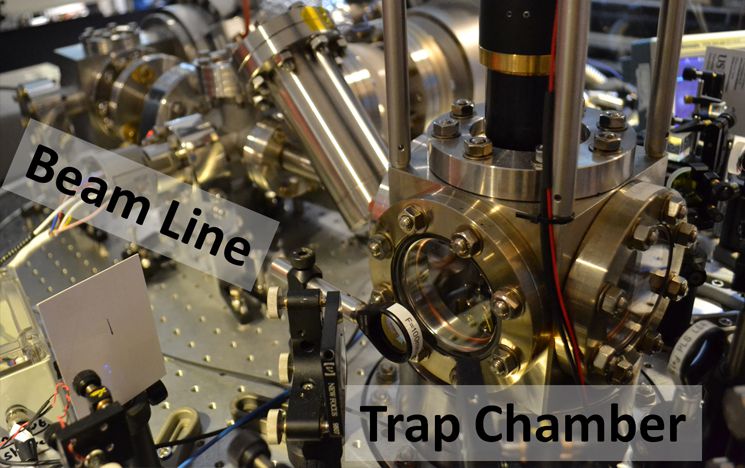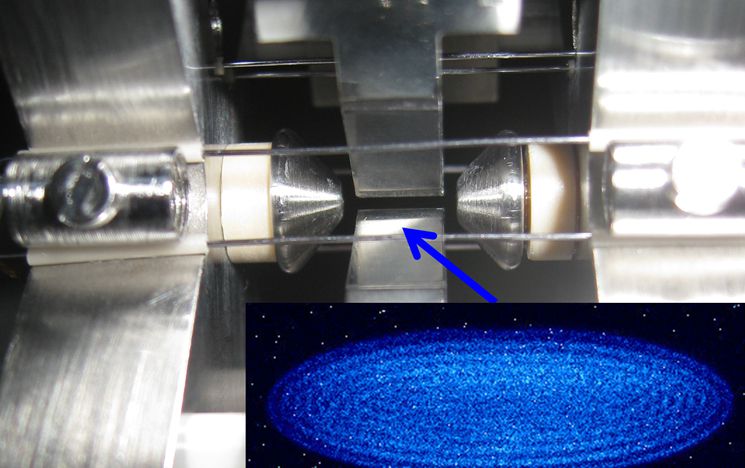High resolution spectroscopy
The science of spectroscopy has benefitted greatly from recent technological advances which has revealed a new regime of precision. The techniques developed as a result would have an impact for frequency standards (global time-keeping and navigation), ultra cold chemistry (Ultracold chemistry page), quantum computation and information processing, and – the most relevant field for us – fundamental physics.
There is a question that we still do not know the answer to in physics: Are the fundamental constants actually constant? Finding the answer to this would have huge implications! By using high-precision spectroscopy to study cold molecular ions, we can begin to look into this.
At ITCM we are studying the fundamental constant µ, which is the proton to electron mass ratio mp/me. The frequencies of the transitions in molecules are dependent on µ. A molecule which is particularly well suited to this measurement is N2+, due to its high sensitivity to µ, as well as other great benefits such as the fact that it is effectively well isolated from the environment (more specifically, it is non-polar, and exhibits no quadrupole shift in the ground state of X2Σg– and so this is our molecule of choice).
There are a multitude of prerequisites for this experiment, and so there are additional sub-projects which are being worked on, including:
- Internal state preparation of 2+ using photoionisation
- Stable frequency reference (Ca+ atomic clock)
- Narrow linewidth lasers
- Non-destructive state detection of molecular ions

Trap set-up

Trap with ions